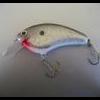
BobP replied to helms83's topic in Fishing Rods, Reels, Line, and Knots

BobP replied to catchnm's topic in Fishing Rods, Reels, Line, and Knots

BobP replied to BASSclary's topic in Fishing Rods, Reels, Line, and Knots

BobP replied to NateFollmer's topic in Fishing Rods, Reels, Line, and Knots

BobP replied to Bass_Akwards's topic in General Bass Fishing Forum

BobP replied to kllrbee's topic in Fishing Rods, Reels, Line, and Knots

BobP replied to Carrot_Stix's topic in Fishing Rods, Reels, Line, and Knots
We have placed cookies on your device to help make this website better. You can adjust your cookie settings, otherwise we'll assume you're okay to continue.

